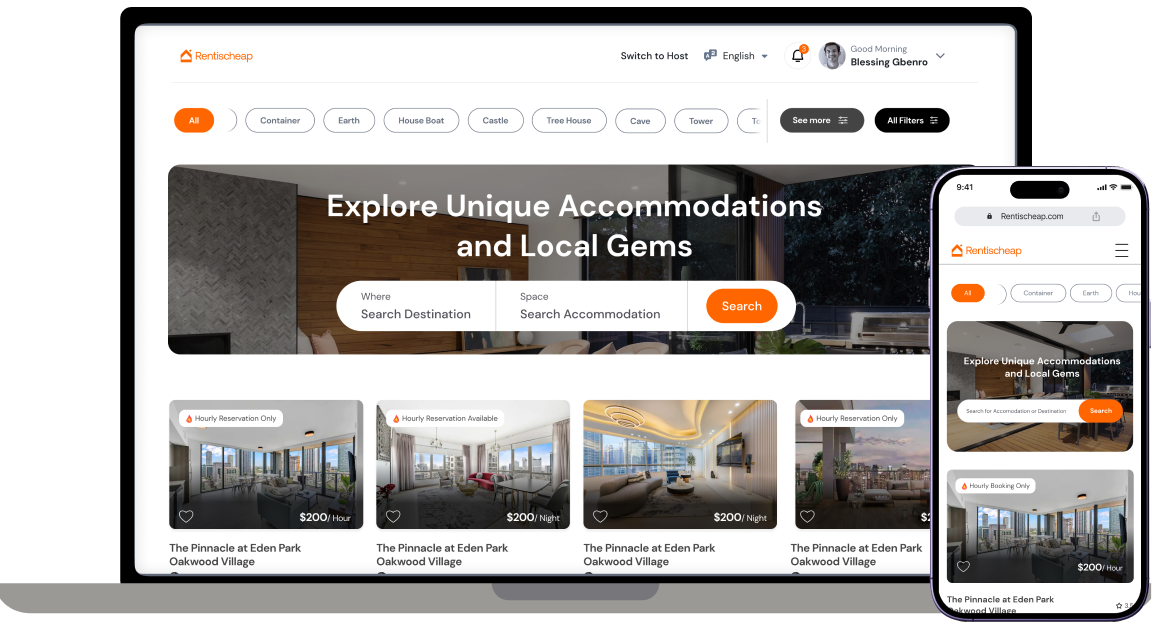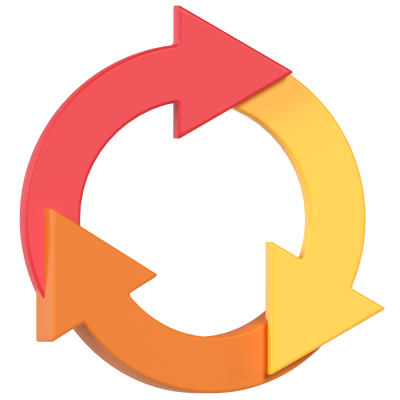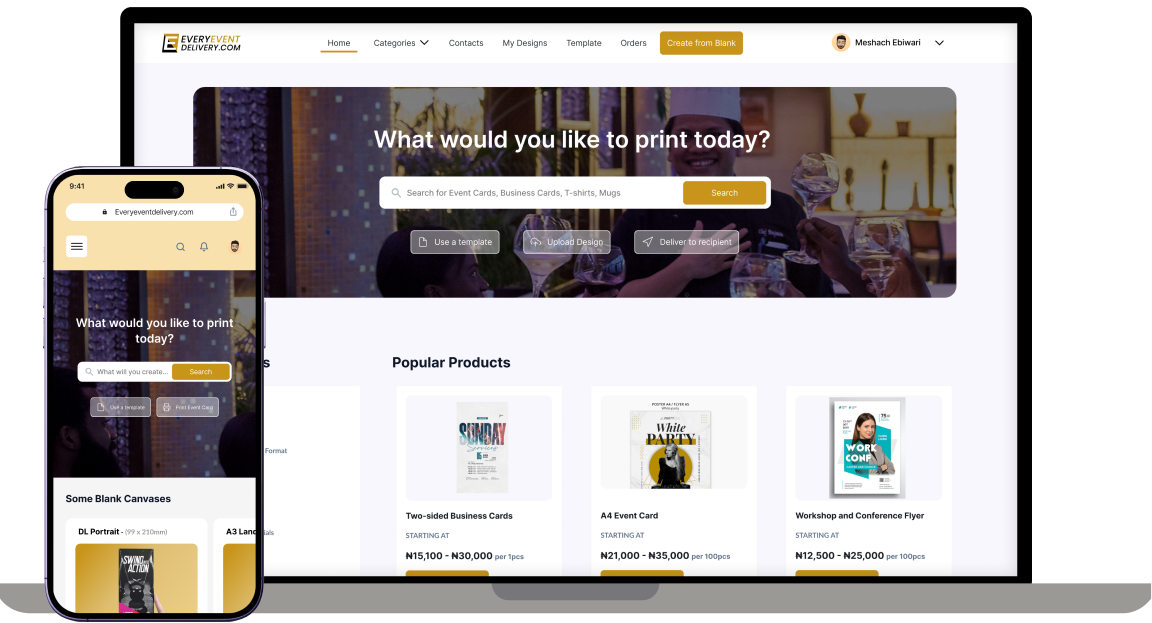Accommodation Booking and Listing Platform for Rentischeap
Rentischeap.com is an Rethinking short-and long-term homestays experiences globally.


We are a leading custom software development agency focused on web, mobile app development & SaaS application development & MVP Development.
Looking for expert custom software developers? At Mobirevo, we build high-performing custom software for businesses that need more than just a standard solution. Whether it’s a complex enterprise platform or a simple single-page application, our team has extensive experience in developing custom software products. At the same time, we are proud to bring our best expertise to the development of custom software, which is our specialty. Mobirevo offers full-cycle custom software development services to provide your company with a one-of-a-kind software product that is tailored to your specific requirements.
We are specialist in SaaS application development, Enterprise resource planning, and management software (ERP software development).
We are a team of incredible Design & Agile software development experts in all major technology stacks. We have over 5 years of experience designing & building custom software that foster growth and give our clients a market advantage and capacity to crush their competitors.


Software, a term coined as a joke and not seen in print until the 1960s, has permeated our culture to the point where we no longer notice it. What it entailed was foreign to ‘earthlings' until 1955, when companies such as Computer Usage Company decided to offer software products and services. The industry grew rapidly in the 1970s as a result of innovation and the "tech bug" that afflicted the world, and it is now a massive industry worth more than the US $407.3 billion in 2013. Nowadays, almost anything that uses electricity contains software, either embedded in the device to make it "intelligent," or installed as software in mobile devices and computers. Creating software entails identifying a need, designing the program, and testing it for bugs. These are the fundamental tasks carried out by software development firms. While some may specialize in a specific aspect of software development (such as front-end or back-end design), others work on general software projects.
They create beneficial programs
A software product is a program, or a collection of programs, that performs a function that potential customers may find useful. A software development company frequently creates multiple products that perform complementary functions. They are known as 'companion products,' and they work together to form a suite.
They develop digital problem-solving solutions
Although the processes and techniques may differ, most businesses strive to create solutions for their customers. These solutions could be full-fledged software for the general public or tailored to the specific needs of businesses and industries.
They create corporate systems and create websites
Software companies create websites and even apps for various operating systems. Some software companies create corporate web-based systems to assist businesses in automating processes, increasing productivity, and facilitating workflow management.
They provide technical information
Many digital agencies provide clients with advice on software packages that aid in business development and customer relationship management. Even better, our Mobirevo development team goes above and beyond. We investigate methods to boost your company's performance by optimizing your business-to-business and end-user analysis.
WordPress Migration
WordPress migration is a difficult task, but it can be made easier. You can quickly change your site to a new host with no data loss. Experience can accelerate the entire migration process.
CMS Development
We specialize in streamlining and streamlining the content creation process for updating your website. Create an easy-to-manage and standards-compliant website based on WP CMS.
They provide business intelligence
Most software companies have extensive experience in providing data, analytical reports, dashboards, Online Analytical Processing (OLAP) solutions, and other data science services to businesses.
Popular names or brands do not always count when it comes to selecting excellent software companies, whether to use their services or simply to learn about them. Here are a few nuggets to tell a software development company that knows what's best for your business:
01
A good software development company's primary goal is to please its clients, and it tailors its work culture to that end.
02
The development company carries its customers along by communicating with them and incorporating them into the development process.
03
A skilled software development team creates one-of-a-kind, efficient software that meets your specific needs and integrates seamlessly into your business. Mobirevo's experts work hard to develop cost-effective innovations that meet your needs while also providing an enjoyable user experience.
04
A great software development company offers truly valuable solutions. We are committed to meeting your needs through our team of highly skilled developers, innovative project managers, and cutting-edge technology. We are committed to enabling critical and ongoing improvements for your company.

With our extensive experience in the IT industry, we encourage our clients to expand their businesses and bring their dreams to fruition. Software companies exist to solve problems and improve people's lives, and this is our number one priority.

Mobirevo team follows the Agile-scrum and waterfall development methodologies. We’ve choosen both methodologies because of their various applicable scenarios which is solely dependent on your project type.
We strictly use the Agile-scrum methodology for businesses and startups looking to launch into their market as fast as possible, which will require us to produce an MVP (Minimum viable product).
Meanwhile we use the waterfall methodology for projects and business solutions that don’t necessarily prefer speed over quality; this means that we follow all stages of development serially from Research to final deployment.
Is there such a thing as an "ideal software development project," and if so, what steps should you take to get there? There are strict guidelines and various software development best practices methodologies, such as scrum or extreme programming, but I've realized that strictly adhering to these processes is not always possible – or wise. This is not to say that we do not strive to accurately implement these methods; we simply need to remain flexible.
As part of this flexibility, we should think about the overall structures that ensure a project's success, as well as how consistency and coherence can improve your chances of achieving the "ideal." We compiled a list of some of our tried and true best practices that help Mobirevo’s software development projects run more smoothly because there isn't a "playbook" on the components of the ideal software development project:

01
Simplicity Of Code: Work Hard To Keep Your Code Simple
The concept of code simplicity was developed by Max Kanat-Alexander, a Google software developer and the Community Lead and Release Manager of the Bugzilla project. The goal is to eliminate unnecessary complexities in software development. The code simplification movement complements other software principles such as DRY (Don't Repeat Yourself), introduced in the book 'The Pragmatic Programmer', and YAGNI (You Aren't Gonna Need It), an agile development mantra. Max's Code Simplicity blog has some interesting posts on this topic.
02
Testing: Test Continuously From End To End
I was initially skeptical of Test Driven Development (TDD) because it seemed overly prescriptive. TDD, I've found, increases your confidence in the quality of your code. On the other hand, Behavior Driven Development (BDD) enables you to learn the features and requirements directly from the customer, and this alignment translates into code that is more responsive to the needs of the users. Full integration testing ensures that all components work as they should and increases code coverage.
03
Coherence In The Code: Remain Consistent About It On Your Team
It's critical to have a consistent style guide for your codebase when working with a team. There is no consistency between authors if you can tell who wrote a particular file in a codebase. There are numerous tools for enforcing consistent style; here are three of our favorites:

Javascript Style Checker (JSCS) is a JavaScript linter with an excellent formatter.

ESLint is a very configurable linter that has gained a lot of traction in the community.

ESLint is a very configurable linter that has gained a lot of traction in the community.
04
Reviews Of Codes: Do Not Be Afraid To Allow Someone To Check Your Code
Everyone makes errors. The first step toward putting your trust in a code review is to adopt an attitude that allows you to accept flaws. It's a good idea to have a colleague read over your pull requests before merging them to ensure final code quality. The bottom line is that code reviews help reduce bugs in the product, so let go of the idea of perfection. "The Code Review Mindset" is an excellent article on the value of code reviews.
05
Estimate: Estimate Your Time And Budget Realistically
A reasonable budget keeps your software project from feeling overburdened. This allows the scope to flex more easily as the project progresses with agile methods, but a truly off estimate can cause issues with quality, morale, and output. Estimation can be difficult because it's difficult to strike a happy medium between being realistic and sandbagging when there are so many unknowns. You can rest assured that better estimation comes with experience, and there are numerous tools available to help with software development project coding estimates. Here's a good place to start.

We are a leading custom software development agency focused on web, mobile app development & SaaS application development & MVP Development.

SDLC, or Software Development Life Cycle, is a series of steps used in the development of software applications. It is usually divided into six to eight steps: planning, requirements, design, build, documentation, testing, deployment, and maintenance. These steps break down the development process into tasks that can be assigned, completed, and measured. Depending on the scope of the project, some project managers will combine, split, or omit steps. These are the essential components for all software development projects;
01
Planning
Project leaders evaluate the project's terms during the Planning phase. This includes calculating labor and material costs, developing a timetable with target goals, and forming project teams, and establishing a leadership structure. Stakeholder feedback can also be incorporated into planning. Anyone who stands to benefit from the application is referred to as a stakeholder. Seek feedback from potential customers, developers, subject matter experts, and sales representatives.
The scope and purpose of the application should be clearly defined during planning. It charts the course and equips the team to create the software effectively. It also establishes boundaries to keep the project from expanding or deviating from its original goal.
02
Define Requirements
Defining requirements is part of the planning process to determine what the application is supposed to do and what its requirements are. A social media application, for example, would necessitate the ability to connect with a friend. For an inventory program, a search feature may be required. Defining the resources required to build the project is also part of the requirements. A team might, for example, create software to control a custom manufacturing machine. The machine is required for the process.
03
Design and Prototyping
The Design phase simulates how a software application will function. Among the design elements are:

Architecture – Defines the programming language, overall design, industry practices, and the use of any templates or boilerplate code.

User Interface (UI) – Defines how customers interact with software and how the software responds to input.

Platforms – These are the platforms on which the software will run, such as Apple, Android, Windows, Linux, or even gaming consoles.

Programming – This includes not only the programming language but also methods for solving problems and carrying out tasks in the application.

Communications – Specifies how the application will communicate with other assets, such as a central server or other instances of the application.

Security – Defines the steps taken to secure the application, which may include SSL traffic encryption, password protection, and secure user credential storage.
Prototyping can be included in the design phase. In the Iterative software development model, a prototype is similar to one of the early versions of software. It demonstrates a basic understanding of how the application appears and functions. This "hands-on" design can be demonstrated to stakeholders. Use feedback to help you improve the application. Changing something in the Prototype phase is less expensive than rewriting code in the Development phase.
04
Software Development
This is the actual program writing. A small project may be written by a single developer, whereas a large project may be divided and worked on by multiple teams. During this phase, use an Access Control or Source Code Management application. These systems aid developers in keeping track of code changes. They also help to ensure that different team projects are compatible with one another and those target goals are met. Many other tasks are involved in the coding process. Many developers need to brush up on their skills or collaborate as a team.
It is critical to identify and correct errors and glitches. Waiting for test results or compiling code so an application can run are two examples of tasks that frequently slow down the development process. SDLC can anticipate these delays, allowing developers to be assigned to other tasks. Instructions and explanations are greatly appreciated by software developers. Documentation can be a formal process that includes creating an application user guide. It can also be informal, such as comments in source code explaining why a developer used a particular procedure.
Even companies that strive to create user-friendly software benefit from the documentation. Documentation can take the form of a quick guided tour of the application's basic features, which appear on the first launch. It could be video tutorials for more difficult tasks. Written documentation such as user guides, troubleshooting guides, and FAQs assist users in resolving problems or answering technical questions.
05
Testing
It is critical to test an application before releasing it to users. Most of the testing, including security testing, can be automated. Another testing can only be done in a specific environment; for complex deployments, consider creating a simulated production environment. Each function should be tested to ensure that it works properly. Different parts of the application should be tested to ensure that they work together seamlessly and eliminate any hangs or lags in processing. The testing phase aids in reducing the number of bugs and glitches encountered by users. As a result, user satisfaction and usage rates improve.
06
Deployment
The application is made available to users during the deployment phase. Many businesses prefer to automate the deployment process. This can be as simple as putting a payment portal and a download link on the company's website. It could also be the installation of an app on a smartphone. Deployment can also be difficult. One example is upgrading a company-wide database to a newly developed application. Because the database relies on several other systems, integrating the upgrade may take more time and effort.
07
Operations and Maintenance
The development cycle is nearly complete at this point. The application has been completed and is being used in the field. However, the phase of operation and maintenance is still important. Users discover bugs that were not discovered during testing during this phase. These errors must be resolved, which may result in new development cycles. Iterative development models, for example, plan additional features in future releases in addition to bug fixes. A new Development Cycle can be launched for each new release.

We believe in approaching each project as a potential game-changer, and as a result, we provide comprehensive support to our clients that extends far beyond the code. This approach, combined with an enthusiastic team, enables us to create the best custom product for your company. We can create a software product of any scale and fully cover your needs in custom software application development because we have experienced business analysts, project managers, software developers, UX/UI designers, and QA engineers on board.
Our team genuinely cares about every project we work on. Our top priority is to ensure that the custom products and apps we develop provide the best results for our clients. To accomplish this, we begin by carefully analyzing business requirements when providing customized software development services. We then match the requirements to potential solutions and advise on the most efficient course of action. Do you have a brilliant concept for a software product? Speak with us today. We are the best software development company in the world.
Our development process is efficient and transparent, allowing us to deliver your software on time and within budget. We are proud of our results-driven team, which values communication and flexibility while focusing on long-term, high-value relationships. Our experienced team offers the best solution for your business challenges, having built numerous custom software products. Our clients' success is our top priority. To ensure the best value, we carefully align your business requirements with software functionality.
We stay up to date on industry trends and tailor our custom software development company and quality assurance processes to meet the highest standards. When your product goes live, our custom software services do not end. Our dependable support team will see to it that your platform runs smoothly.






We are a leading custom software development agency focused on web, mobile app development & SaaS application development & MVP Development.
Rentischeap.com is an Rethinking short-and long-term homestays experiences globally.

Sabiprints transforms your vision into stunning prints, offering design, customization, sull-spectrum printing, and delivery services and comprehensive print solutions—all in one place.

Free Business and Technology insights
Copyright © 2022 Mobirevo Software & Technologies LTD a company duly registered with CAC with RC Number: 1756190. All rights reserved.